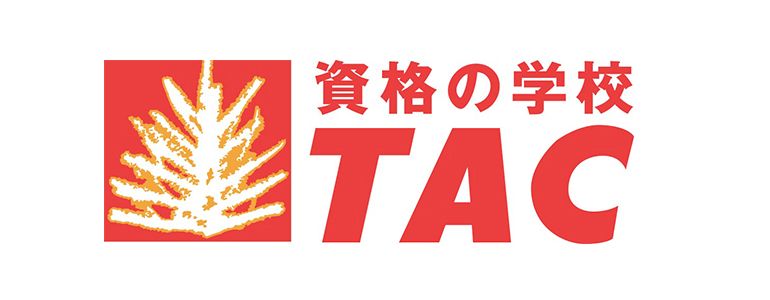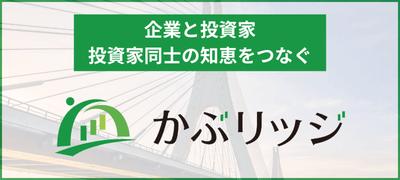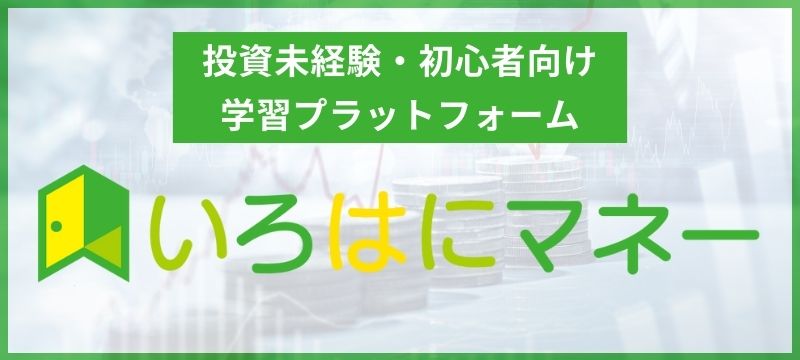| TAC Co., Ltd. (4319) |
|
||||||||
Company |
TAC Co., Ltd. |
||
Code No. |
4319 |
||
Exchange |
1st Section Tokyo Stock Exchange |
||
Industry |
Service |
||
President |
Hiroaki Saito |
||
HQ Address |
Misaki-cho 3-2-18, Chiyoda-ku, Tokyo |
||
Year-end |
March |
||
Homepage |
|||
* Stock price as of close on June 5, 2017. Number of shares outstanding as of most recent quarter end do not include treasury shares.
|
||||||||||||||||||||||||
|
|
* Estimates are those of the Company. The definition for net income has been changed to net income attributable to parent company shareholders. (Abbreviated as Parent Company Net Income)
|
|
| Key Points |
 |
| Company Overview |
 <Corporate History>
TAC was established in December 1980 as a school providing instruction to people seeking to obtain certifications and qualifications through examinations, including courses for the Certified Public Accountant, Bookkeeper, and Licensed Tax Accountant examinations. In October 2001, TAC listed its shares on the Over The Counter Market, and later moved its shares to the Second Section of the Tokyo Stock Exchange in January 2003 and then to the First Section in March 2004. TAC acquired KSS Co., Ltd. (formerly known as Waseda Management Publishing), which conducts certification and qualification acquisition support services including the provision of preparatory courses for Bar Examination, Judicial Scrivener, Patent Attorney, Level-1 Civil Service, Special Personnel of the MOFA, in September 2009. Through the addition of this company, TAC has been able to fortify its strengths in the accounting area by adding certification preparatory courses in the legal area, and to round out its service lineup with courses in the Public Officer area. In December 2013, the Company formed a collaborative agreement that included the sharing of capital with Zoshinkai Publishers Co., Ltd. for work in the development of a correspondence course education service for elementary, junior and senior high school students. Furthermore, other M&A activities were conducted in June 2014 to gain entry into the medical office area.
<Strengths>
Since the founding of the Company, TAC instructors have made revisions to the text materials used in its courses every year, and this ability to respond to changes and revisions in the examination and legal systems is a distinguishing feature and strength of TAC. For a company like TAC with sales approaching ¥20.0 billion, absorbing the costs of updating text materials on an annual basis is possible. However, new entrants and smaller players in the market have a much more difficult time absorbing the costs of updating teaching materials. Other strengths of TAC include its knowhow and efficiency accumulated over the history of its operations in providing the most updated information to the students of its courses.
(1) Detailed Response to Changes, Revisions in Examination System, Laws (2) Full-Scale Lineup and Active Course Development
TAC has risen to become the top player in the industry through its active efforts to develop courses in new areas, including those targeting university students, and it has become the first company within its industry to list its shares. Along with the acquisition of W Seminar's certification and qualification acquisition support business in 2009, TAC has been able to fortify its weakness in the areas of legal and public officer related courses. Consequently, the Company now boasts of a strong business model comprised of the three main cornerstones of accounting (Certified Public Accountant, Licensed Tax Accountant and Bookkeeper), legal, and public officer related certification and qualification acquisition support courses.
(3) Providing Innovative Services with a Focus upon Students
Innovative services are yet another strength of TAC. TAC was the first school in the certification and qualification acquisition support services market to introduce educational media and enable students to choose which instructor they would like to study under. This corporate focus upon satisfying the needs of students is reflected in the quality of the text materials offered and has contributed to the establishment of a strong brand reputation as "TAC, The Certification School."
 |
| Fiscal Year March 2017 Earnings Overview |
|
Regarding Sales
Students applying for courses are required to pay tuitions at the time of their initial application (TAC calls these fees tuition advance pre-adjustment sales or sales on a cash basis), which are then booked on the balance sheet as a liability under the title "tuition advance." These tuition advances are then written down and booked as sales in the month that educational services were provided to the student (TAC calls these fees tuition advance pre-adjustment sales or sales on an accrual basis). While sales booked on the income statement are "sales on an accrual basis (tuition advance pre-adjustment sales)", the actual indicator of the sales conditions of the Company in the term are considered to be the "sales on a cash basis (tuition advance pre-adjustment sales)" (The fact that cash and equivalents are influenced strongly by the sales on a cash income is a characteristic that is shared with companies that take orders) and they are deemed to be a leading indicator for actual sales. Therefore, TAC management identifies this "sales on a cash basis (tuition advance pre-adjustment sales)" as a key management indicator.
Regarding Seasonal Characteristics
Examinations for the majority of certification courses are held from the second (July to September) to third quarters (October to December), and core courses, especially those for Certified Public Accountants and Licensed Tax Accountants, fall into the time frame for examinations in the following year. At the same time, all courses fall into the fourth (January to March) and first quarters (April to June).Despite an increase in sales on a cash basis and Account receivable-trade sales during the second and third quarters, tuition advances are written down and booked depending upon enrollment period and gross margin is profoundly influenced because of the booking of a fixed level of expenses every month. In the fourth and first quarters, these tuition advances are then written down and booked as sales in each month, causing gross margin to increase.  Sales, Profits Rise
Sales on a cash basis and on an accrual basis rose by 2.6% and 2.2% year-on-year to ¥20.627 and ¥20.440 billion respectively. Finance and accounting, financial service and real estate, and medical care and welfare areas related curricula trended favorably. When the loss of some ¥300 million from the termination of the sales of the tax filing software "Mahojin" at the end of the previous Fiscal Year March 2016 is taken into consideration, sales on an accrual basis would have risen by about ¥800 million year-on-year.Operating income rose by 17.7% year-on-year to ¥713 million. While labor, advertising and other expenses increased, the disappearance of goodwill amortization from the current term allowed the operating income to rise by double digits. ¥120 million in dealer contract cancellation settlement fees for the tax filing software "Mahojin" booked as extraordinary income allowed the net income to rise by 129.6% year-on-year to ¥490 million.  <Personnel Education Business>
Sales and Profits grow, and business turns profitable for the first time in three years.
 Strengthening of sales channels including reforms of the Internet application system, reduction in operating hours, and internalization of business processes allowed the expenses to be reduced. <Corporate Training Business>
Sales and Profits Decline.
 <Publishing Business>
Higher Sales and Profits(TAC Publishing Sales) <Manpower Business>
Higher Sales and Profits
 <Market Overview>
The number of people applying for examinations of various certification categories in which TAC conducts training increased by about 96,000 from 2.513 million in the previous year to 2.609 million in 2016, for the second consecutive year of year-on-year increase. Bookkeeping, financial planning, and IT related students rose by 38,000, 33,000 and 45,000 respectively.The number of people sitting for Accountant examinations rose for the first time in six years, but students of Licensed Tax Accountant exams continued to decline. Finance, Accounting
Sales on an accrual basis rose by 9.7% year-on-year.
(Certified Public Accountant Examination Course)
Sales on a cash basis rose by 6.8% year-on-year.
(Bookkeeping Certification Course)
Sales on a cash basis rose by 14.7% year-on-year.
Management, Taxation
Sales on an accrual basis declined by 4.9% year-on-year.
(Licensed Tax Accountant Examination Course)
Sales on a cash basis declined by 6.4% year-on-year.
(Small and Medium Enterprise Management Consultant Course)
Financial Service, Real Estate
Sales on an accrual basis rose by 10.9% year-on-year.
 Law
Sales on an accrual basis declined by 2.9% year-on-year.(Bar Examination Courses) Sales on a cash basis rose by 5.7% year-on-year. (Others)
Bar Examination courses for entry level students and students with examination experience both trended weakly, contributing to a 10.3% year-on-year decline in sales on a cash basis.Patent Attorney courses also fell by 5.7% year-on-year. Public Officer, Labor
Sales on an accrual basis rose by 1.7% year-on-year.
(Certified Social Insurance and Labor Consultant Course)
(Public Officer Course)
Information Technology and International Areas
Sales on an accrual basis rose by 1.6% year-on-year
(IT Specialist Course)
(United States Certified Public Accountant, Enrolled Agent Licensed Tax Accountant (EA), Certified Management Accountant (USCMA), TOEIC® L&R Test, and Other International Certifications)
(Comp TIA Course)
Medical Care and Welfare
Sales on an accrual basis rose by 39.2% year-on-year.
Others
Sales declined by 17.0% year-on-year.
(Manpower Business)
 <Increases> Courses for Bookkeeping certification, Certified Public Accountants, Real Estate Transaction Manager, and Public Officers (National Public Employees in the Regular Service and Senior Officials of Local Government courses) rose by 8.6%, 5.4%, 12.5% and 6.0% year-on-year respectively. <Declines> Courses for Licensed Tax Accountants, Securities Analysts, Judicial Scriveners, and USCPA fell by 6.8%, 5.3%, 12.2% and 9.5% year-on-year respectively. While corporate students attending in-university seminars rose by 7.8%, corporate client services including correspondence type training, affiliated schools courses, and consigned training rose by 7.8%, declined by 4.9% and 7.8% year-on-year respectively.  A ¥206 million rise in tuition advance contributed to a ¥18 million rise in total liabilities to ¥17.110 billion. Net assets rose by ¥418 million to ¥4.959 billion due to a rise in retained earnings. Consequently, capital adequacy ratio rose by 1.5% from the end of the previous term to 22.5% at the end of the current term.  Consequently, cash position declined by a small margin. (6) Topics
The creation of a new certification examination for the cultivation of human resources in the finance industry entitled "Financial Industry Human Resources, Corporate Management Advisor Certification" led to the establishment of new courses.Creation of New Certification Examinations and New Courses (Overview and Process of Newly Created Certification Examination) While it goes without saying that the sustained growth in regional companies is critical in resolving the key issue confronting Japan of invigorating regional economies, the role of financial institutions in providing financial assistance is also crucial. Specifically, the ability to evaluate the contributions of companies to regional economies and to subsequently respond flexibly with financial support that does not only rely upon collateral and guarantees of these companies is crucial. TAC seeks to play a vital role in the invigoration of regional economies through its ability to cultivate human resources with specialized skills required to evaluate the future business potential of companies to which financial institutions may extend financial support. Thus, the opening of new courses in response to these new certification examinations is expected to in turn contribute to the development of regional societies.  The capital contribution for the establishment of the Japan Finance Professional Development Association and the expense of text materials are expected to amount to between ¥20 and ¥30 million. |
| Fiscal Year March 2018 Earnings Estimates |
 Sales, Profits Expected to Rise in Coming Term
Sales on a cash basis are expected to rise by 1.8% or ¥362 million to ¥20.990 billion in the coming term.Gross income ratio is expected to rise by 0.2%, and sales, general and administrative expenses ratio to decline by 0.2%, allowing operating income to rise by 13.6% year-on-year to ¥810 million. Dividends are expected to be raised by ¥1 to ¥5.00 per share, for an anticipated dividend payout ratio of 21.0%. TAC has identified four themes within its medium to long term business strategy including "New Business Development and Cost Control", "Profitability of New Courses", "Promotion of M&A and Cooperative Partnerships", and "Increasing Corporate Brand Value". With regard to new courses, sales of the architect courses have ramped up steadily since its establishment in fall 2012, Teacher's Certificate Exam Courses have been steadily expanding by prefectures since their establishment in fall 2013, and efforts to acquire participants for other courses are also being implemented. |
| Conclusions |
|
Amidst a recovery in the operating environment accompanying the renewed activity within the accountant market, efforts are being made to increase the speed and volume of this business to bear fruit over the near term. |
| <Reference: Regarding Corporate Governance> |
 ◎ Corporate Governance Report
The company submitted the latest corporate governance report on Jun. 29, 2016.
  Disclaimer
This report is intended solely for information purposes, and is not intended as a solicitation to invest in the shares of this company. The information and opinions contained within this report are based on data made publicly available by the Company, and comes from sources that we judge to be reliable. However we cannot guarantee the accuracy or completeness of the data. This report is not a guarantee of the accuracy, completeness or validity of said information and or opinions, nor do we bear any responsibility for the same. All rights pertaining to this report belong to Investment Bridge Co., Ltd., which may change the contents thereof at any time without prior notice. All investment decisions are the responsibility of the individual and should be made only after proper consideration.Copyright(C) 2017 Investment Bridge Co., Ltd. All Rights Reserved. |





